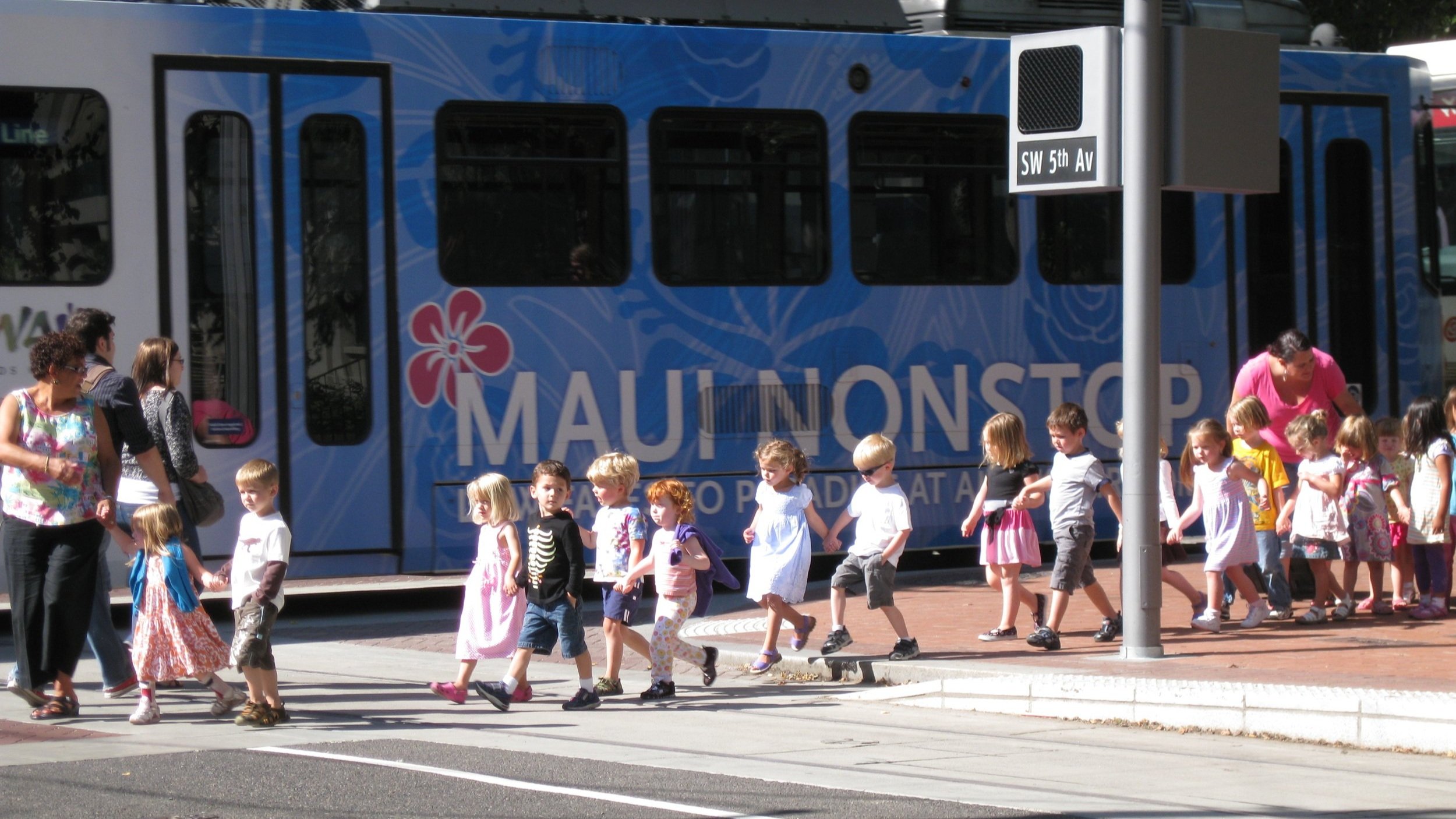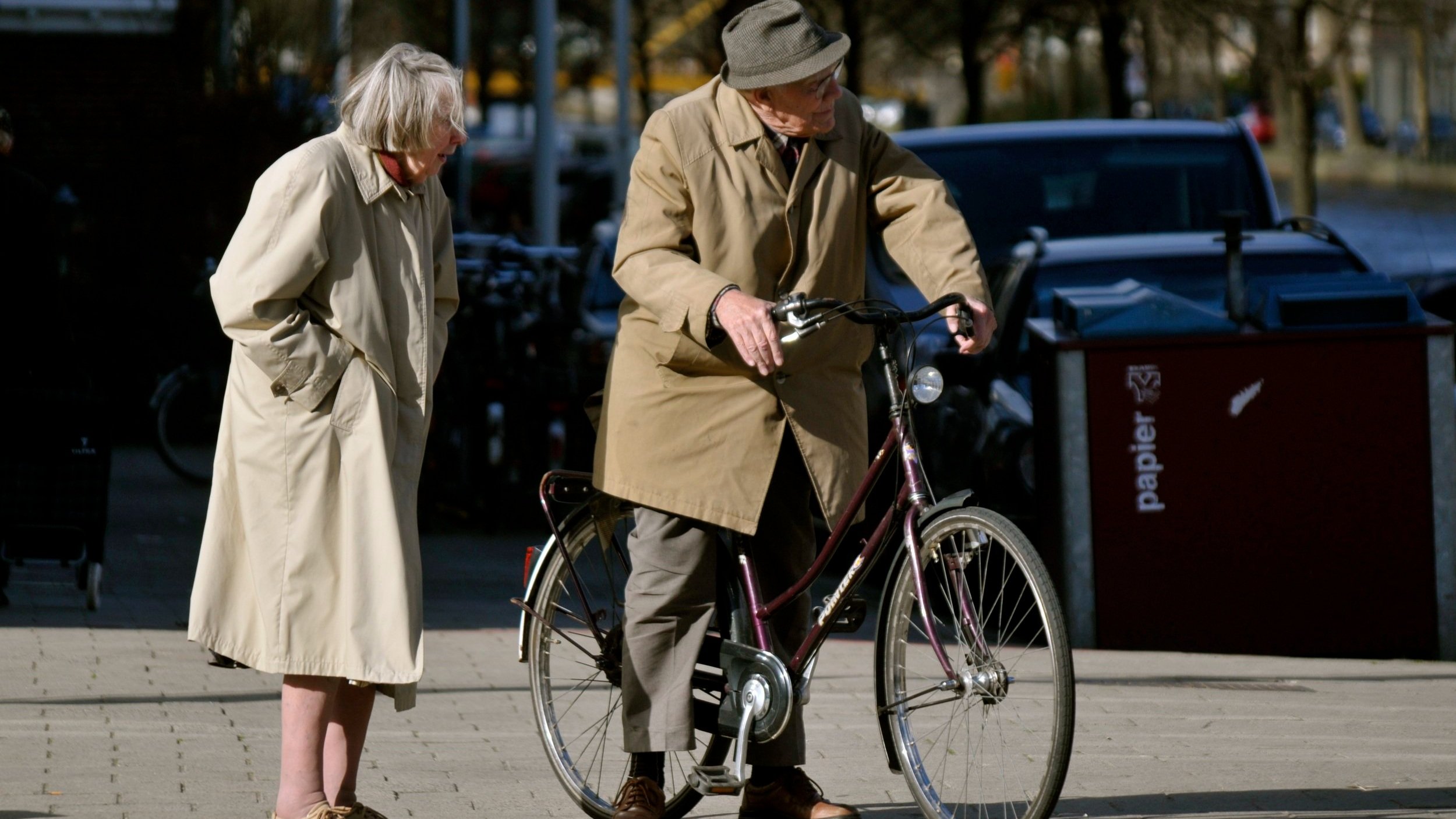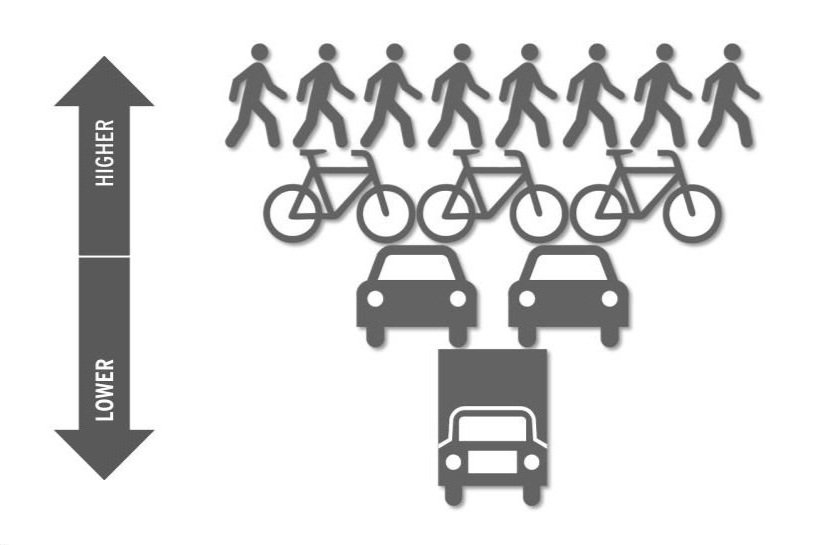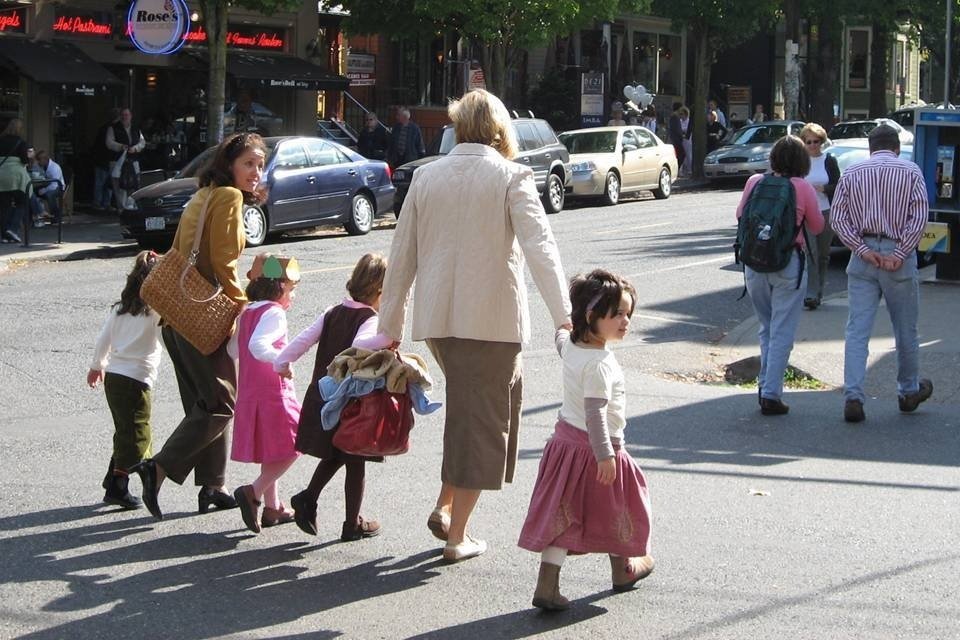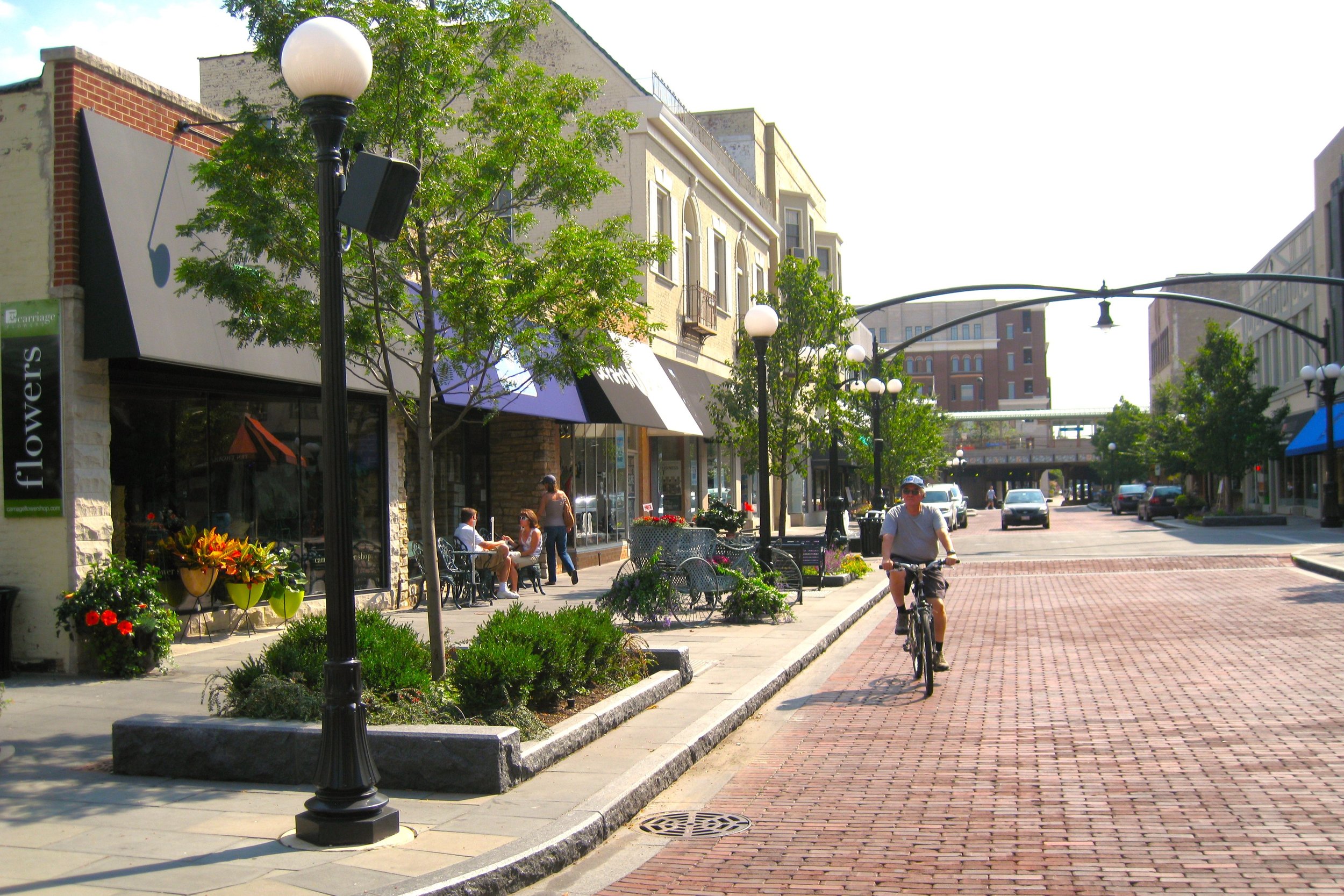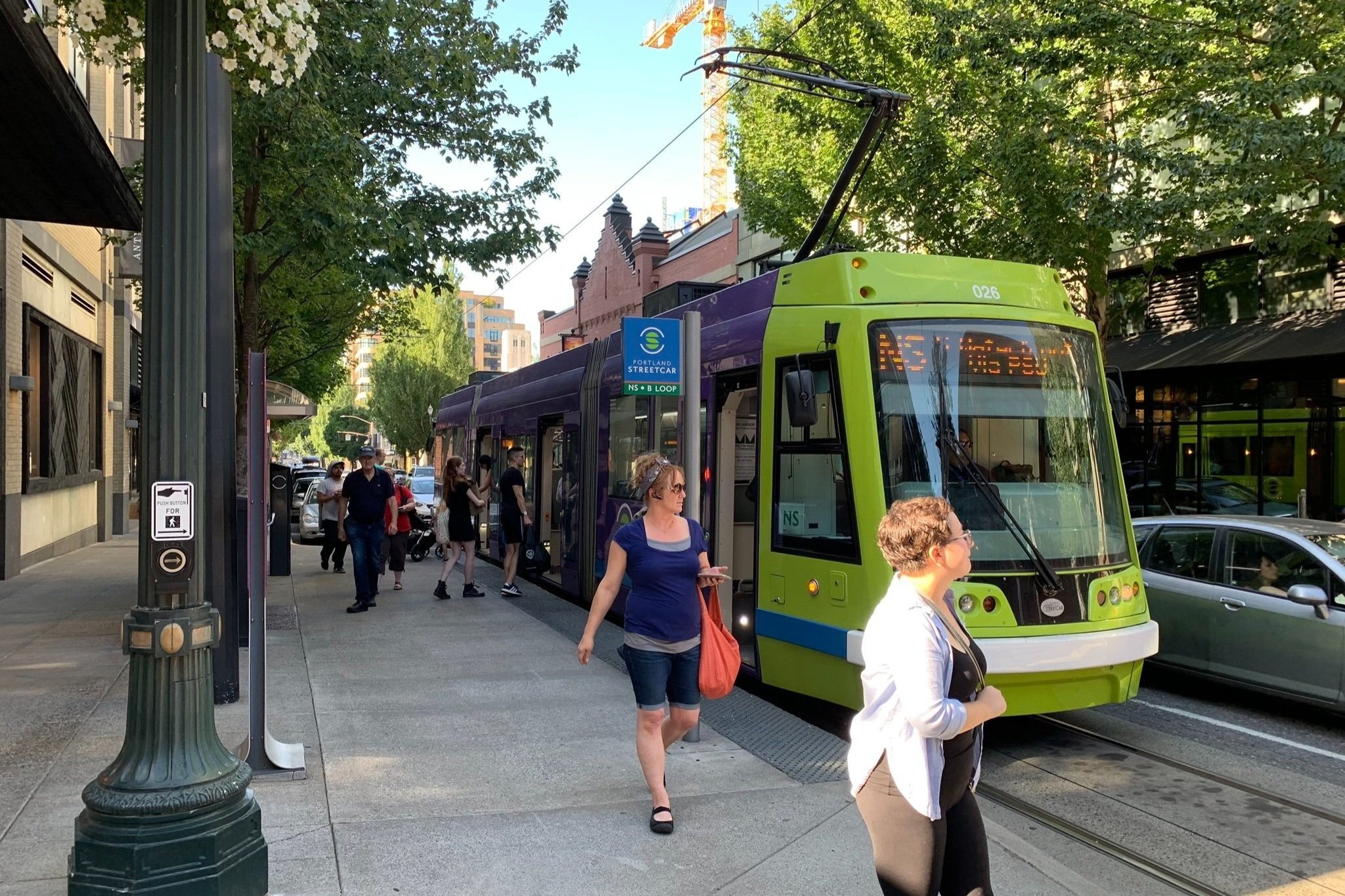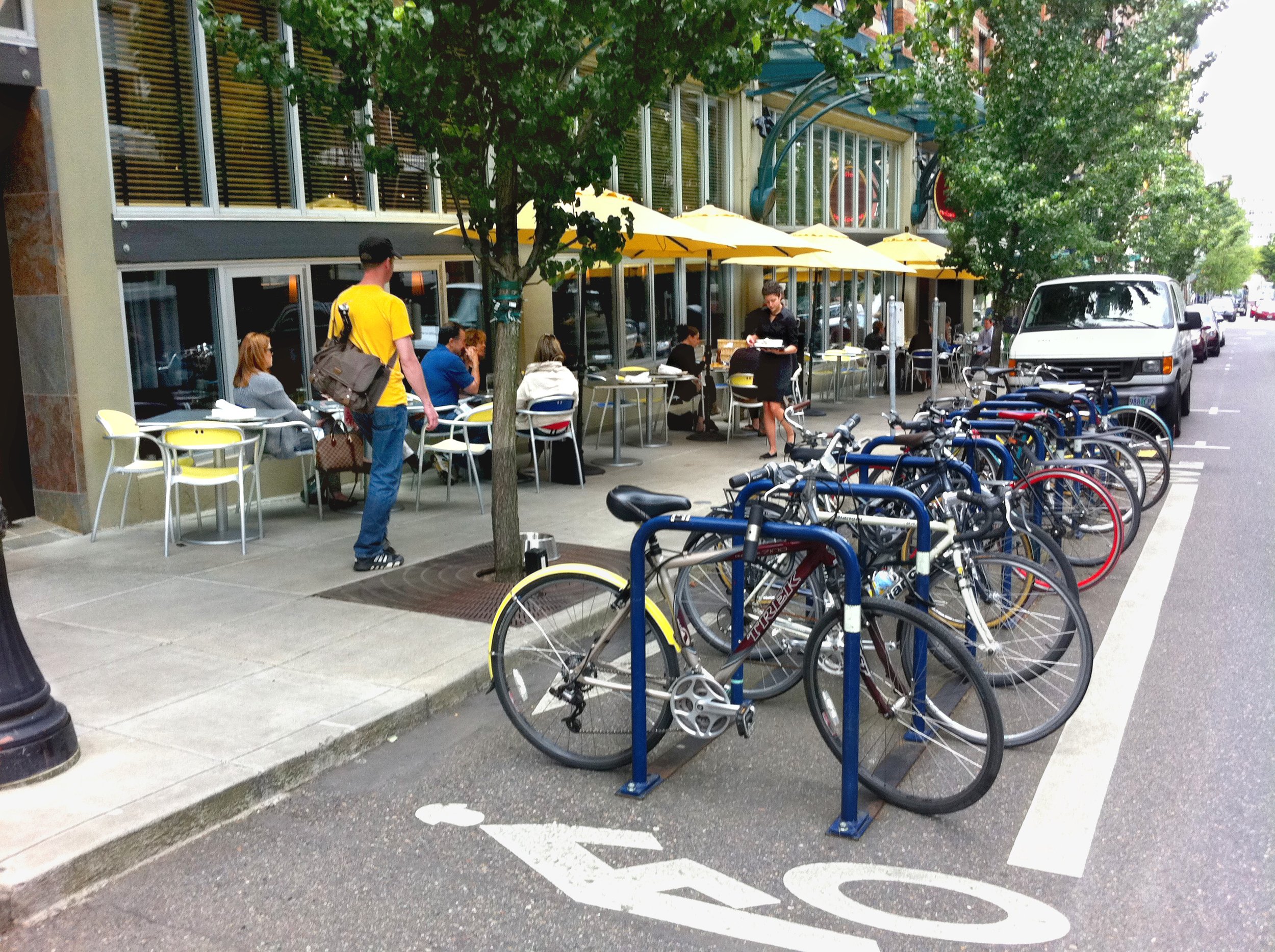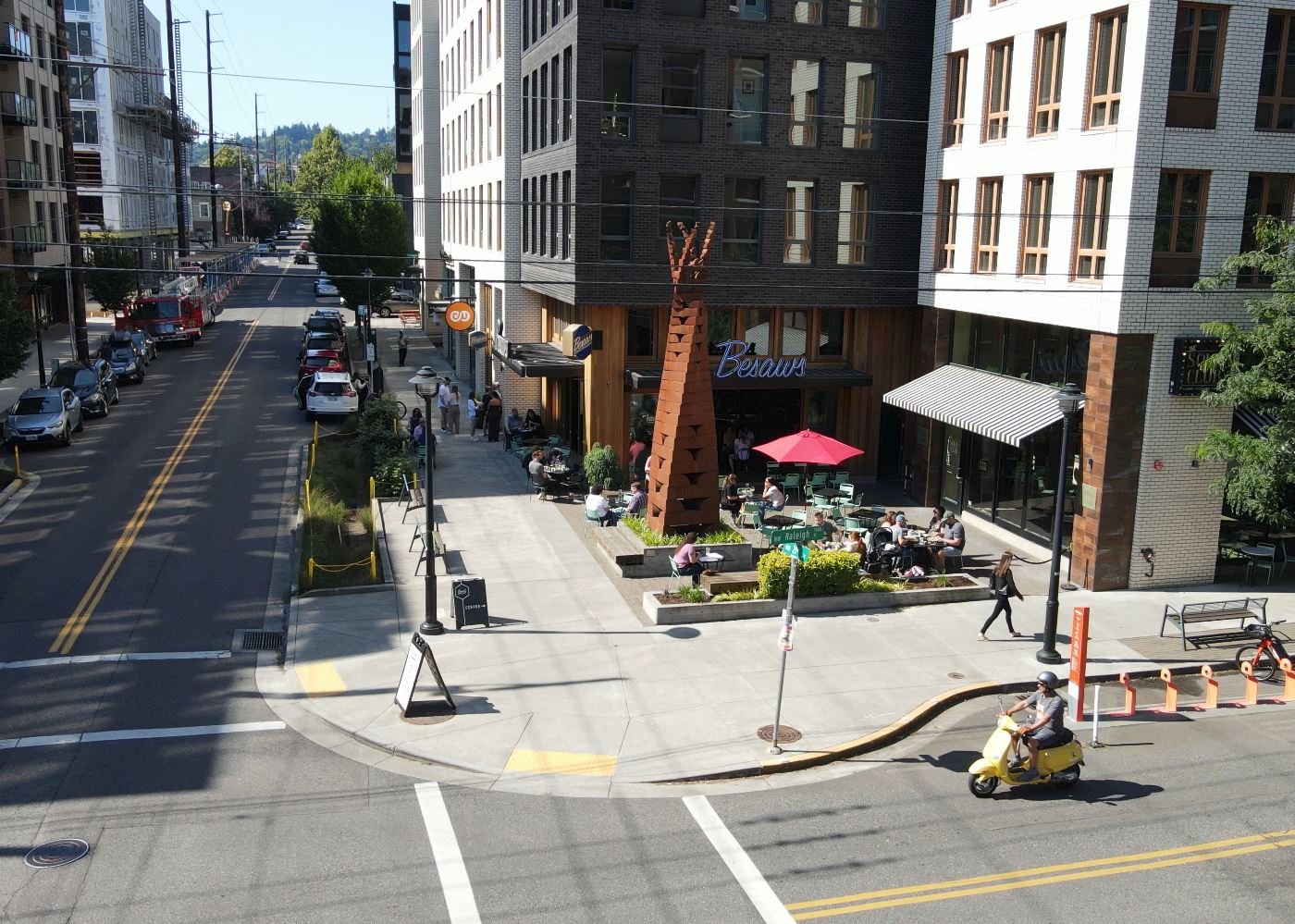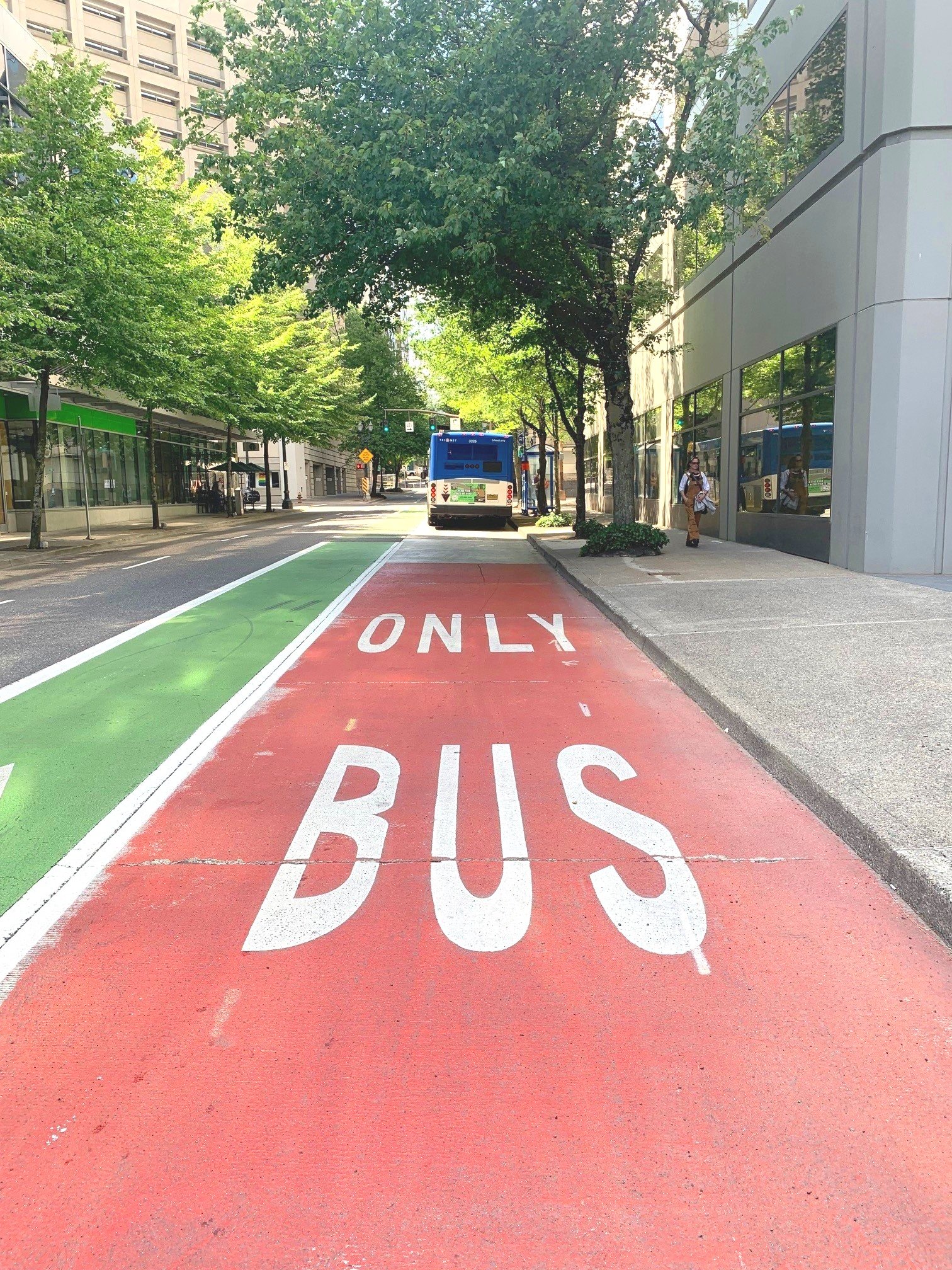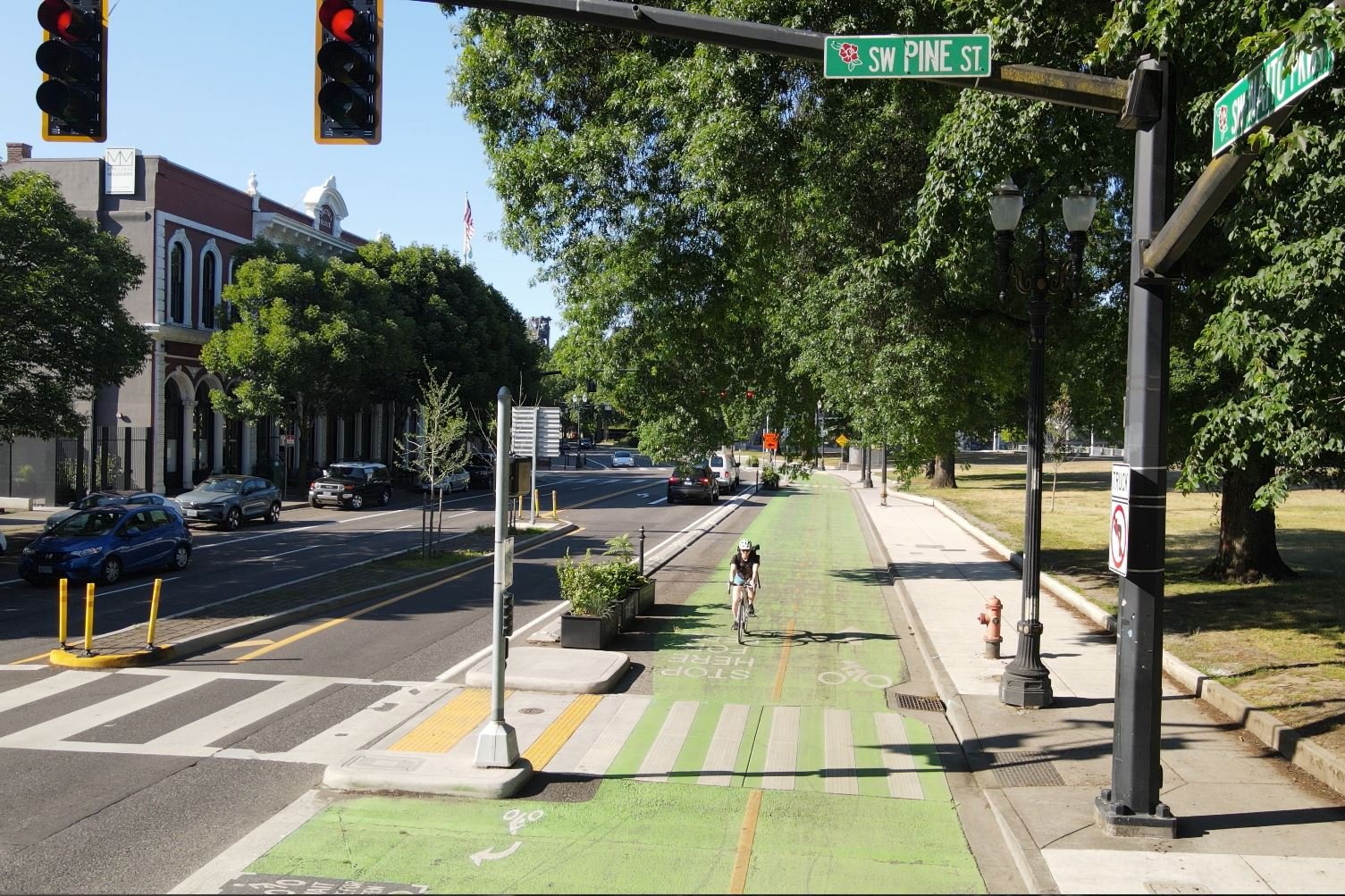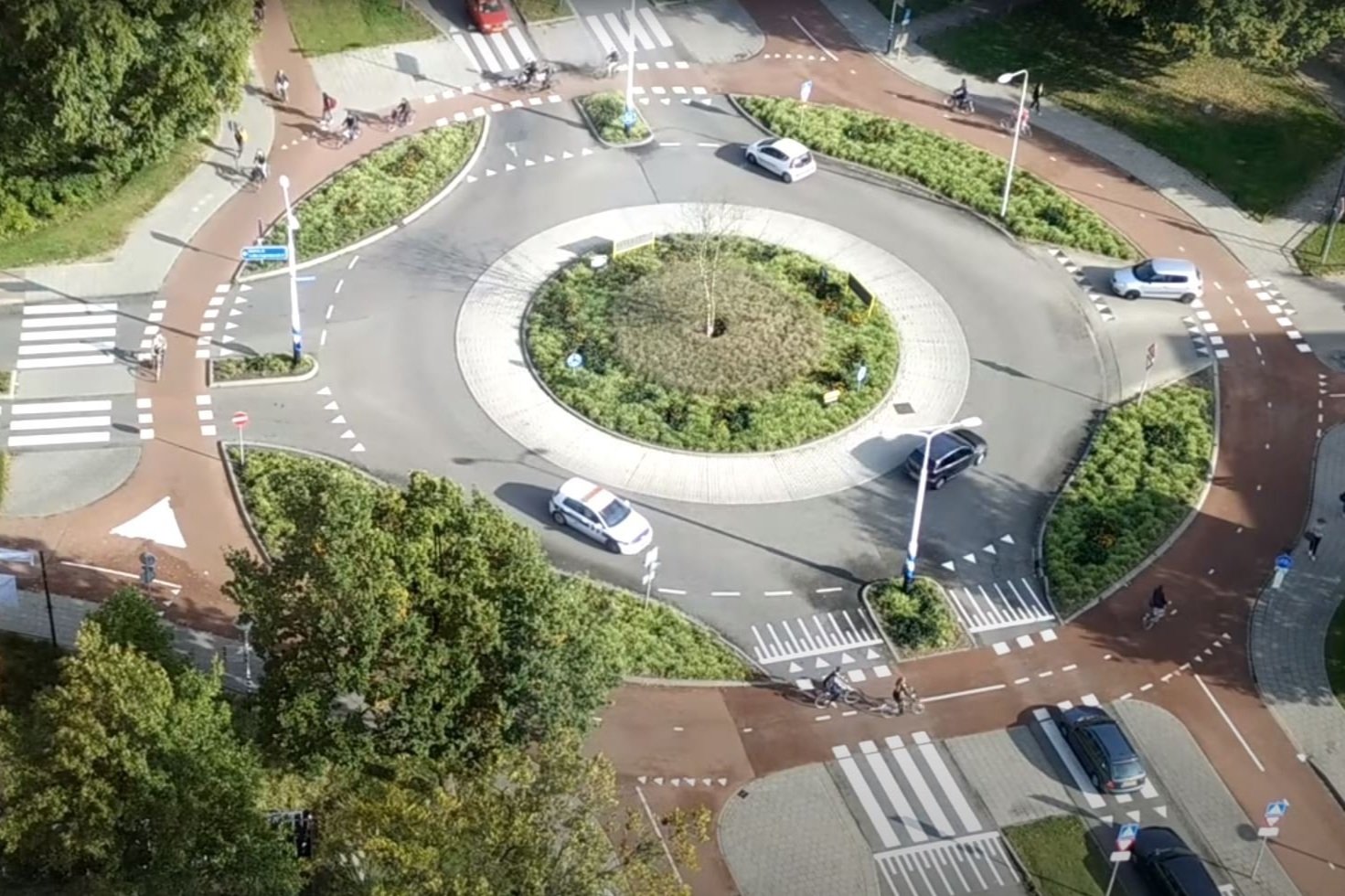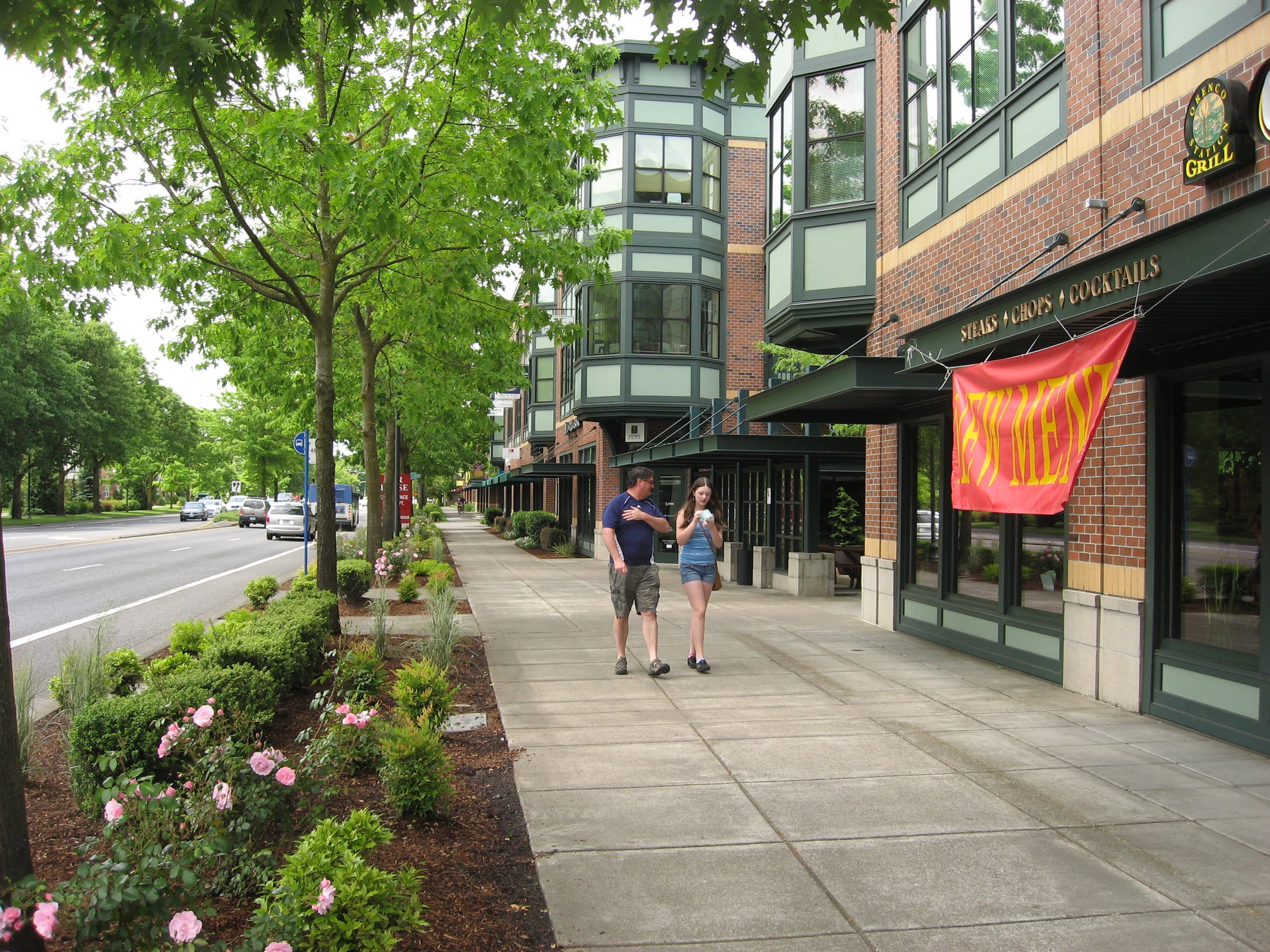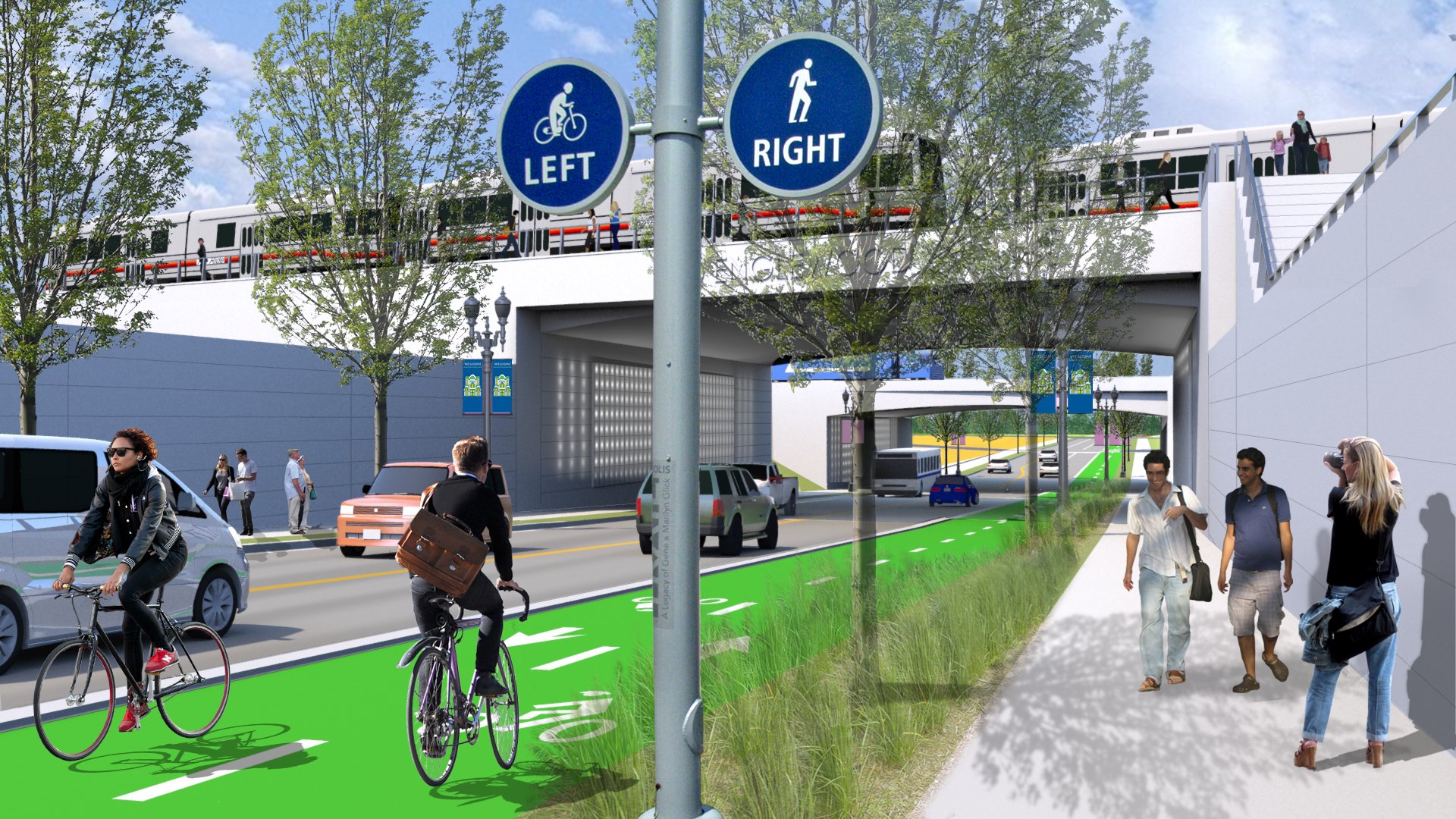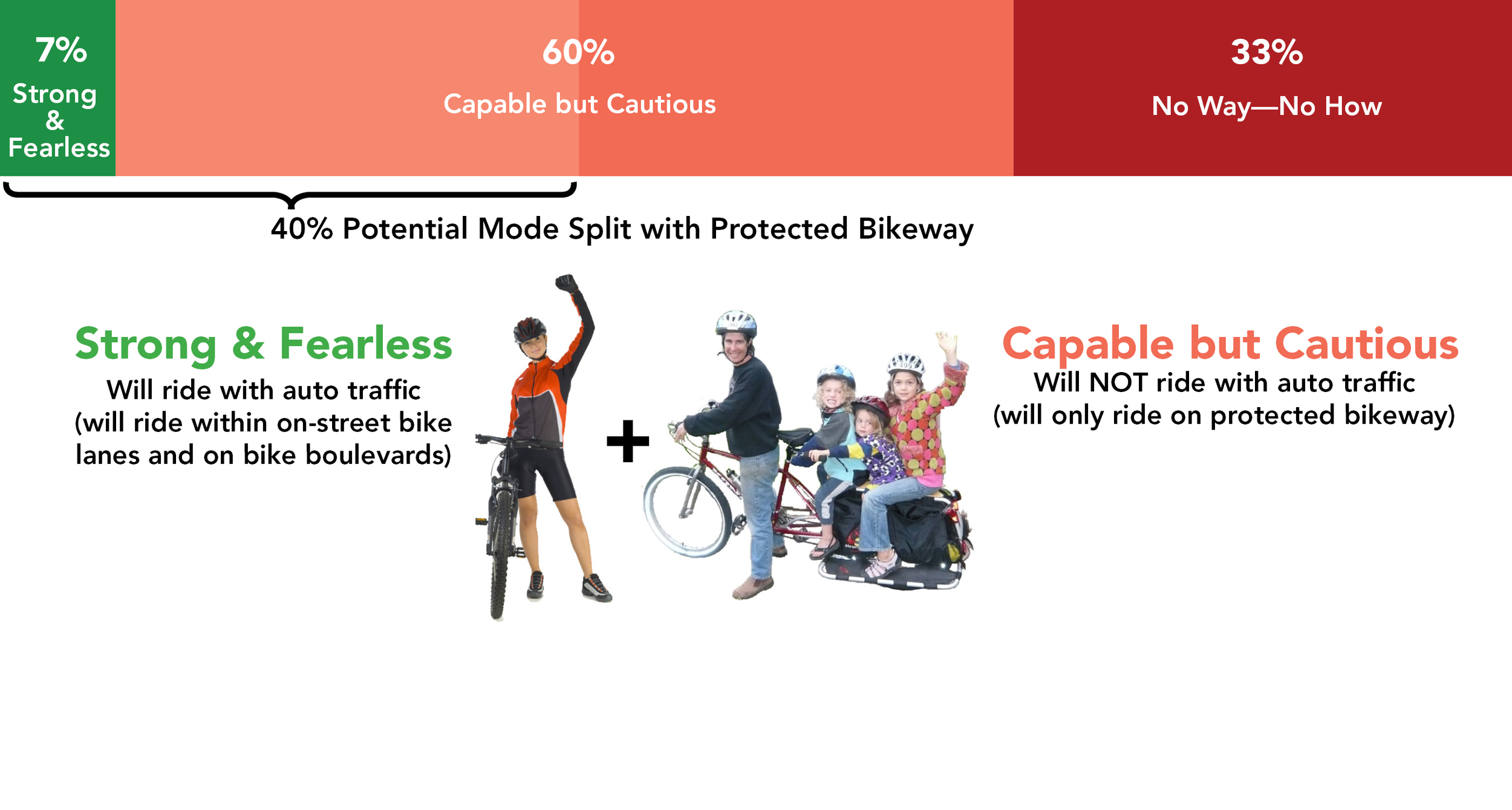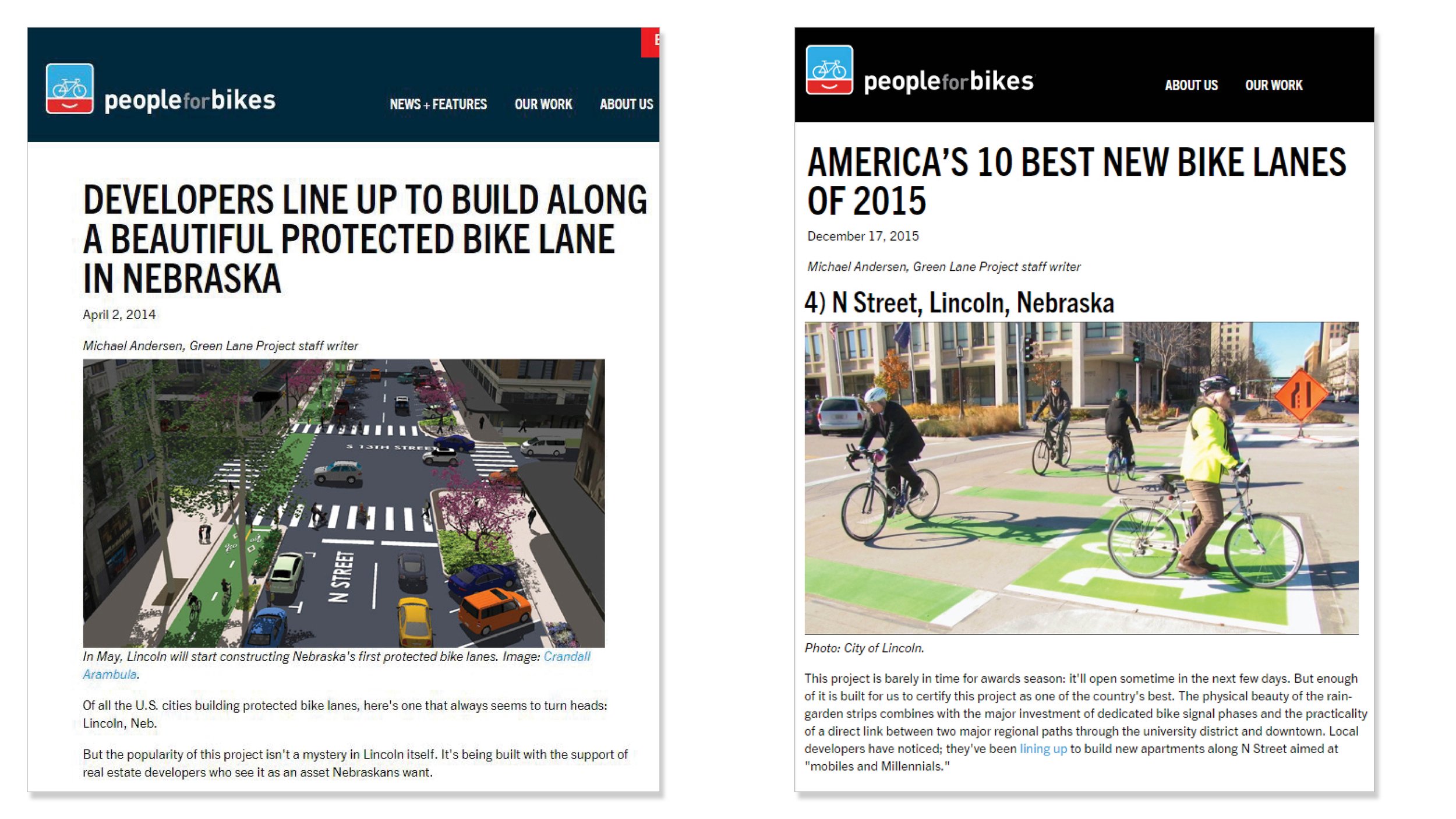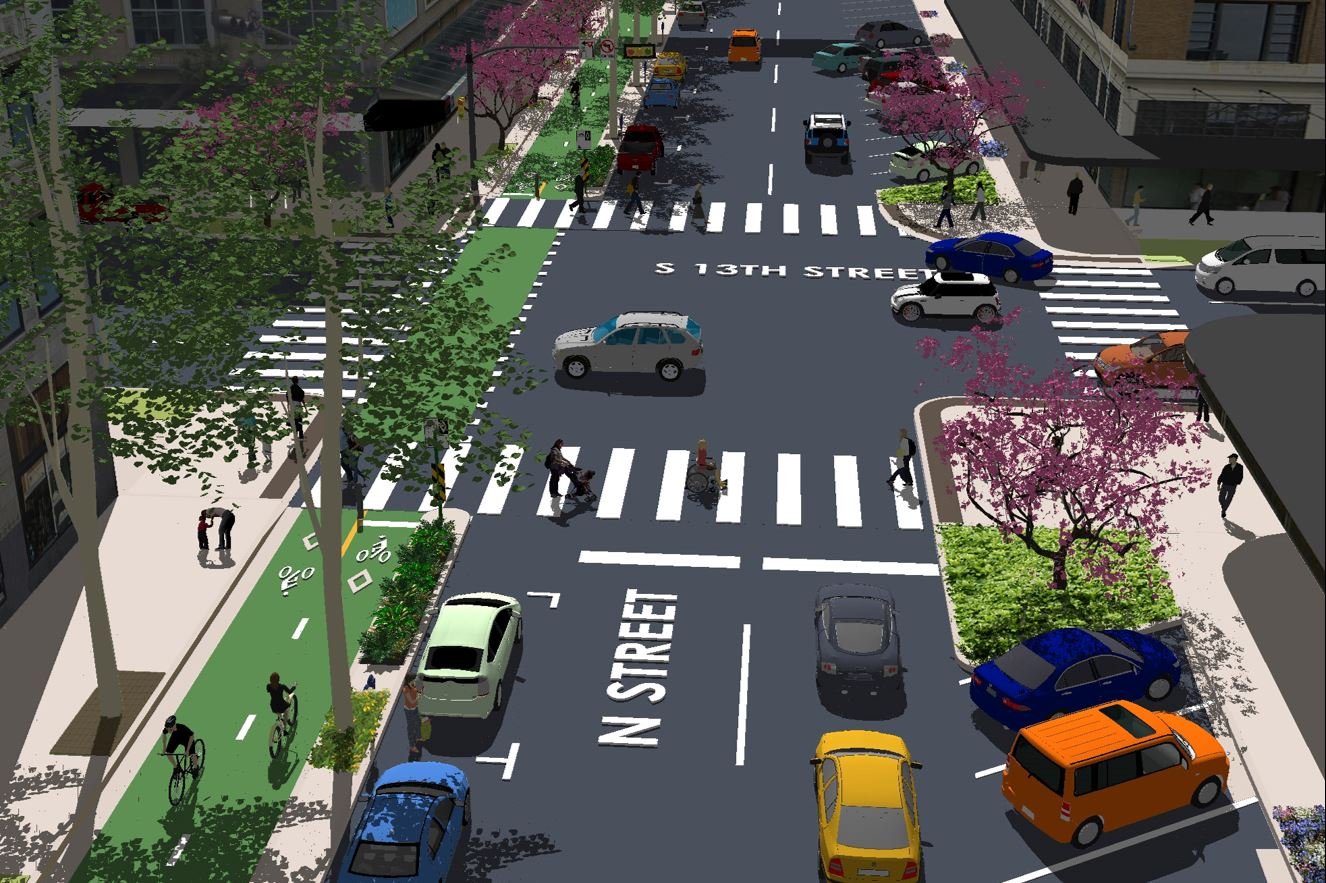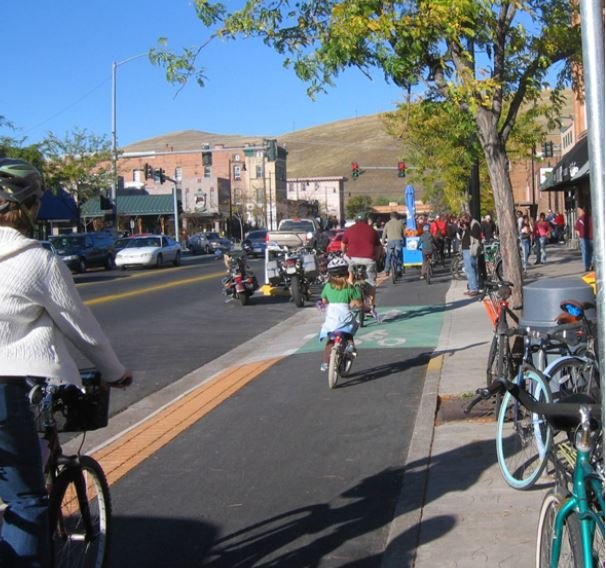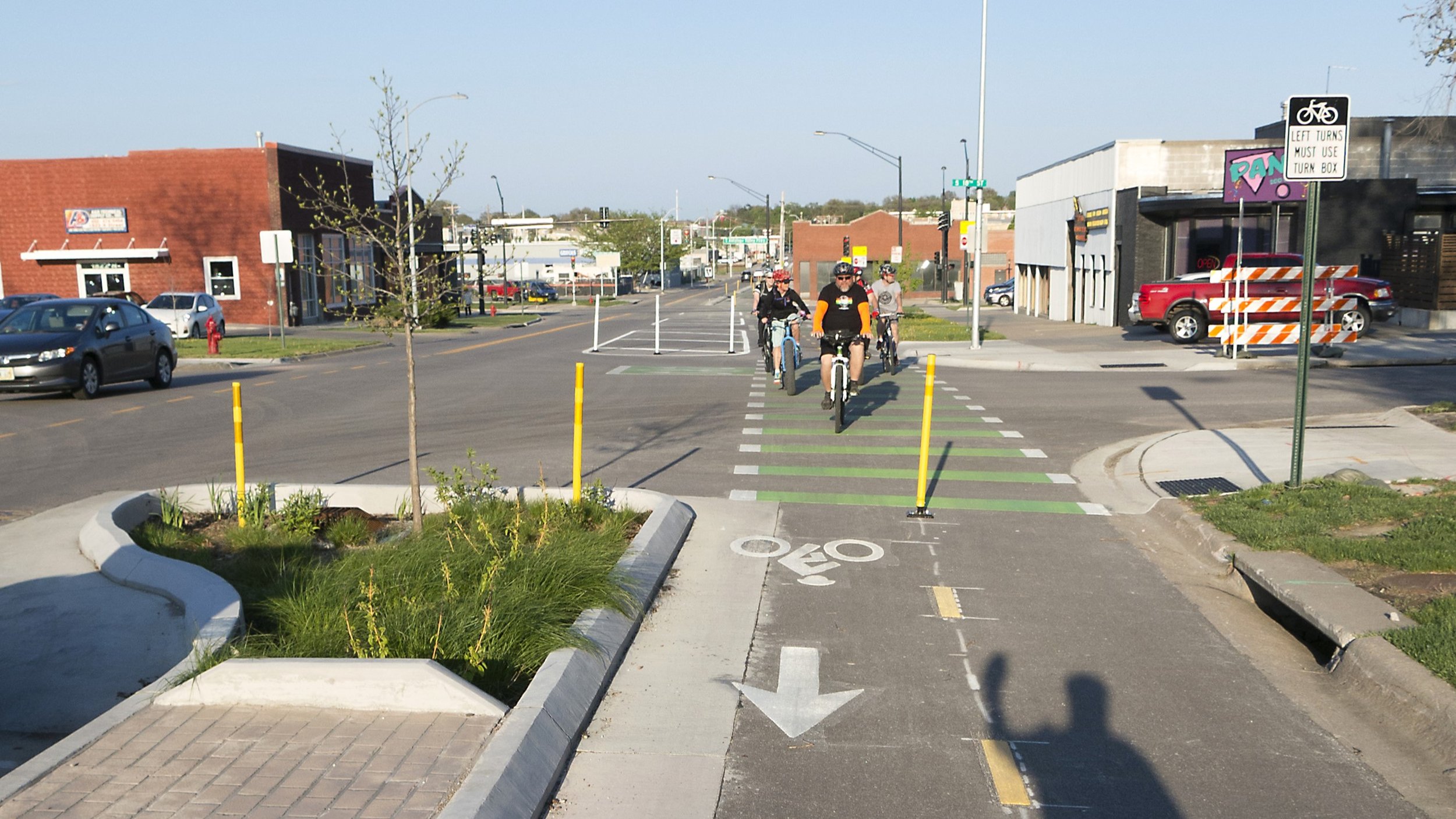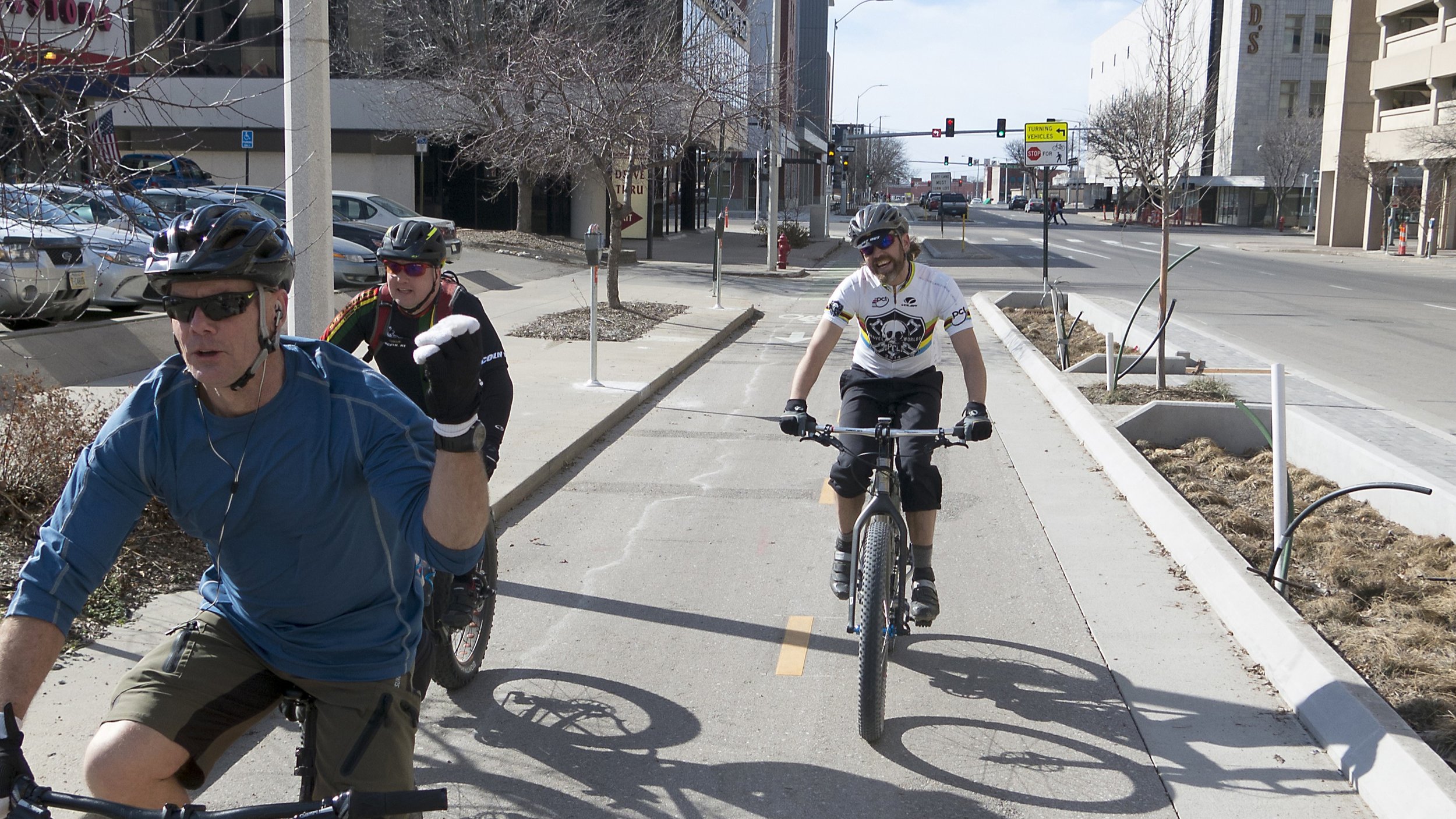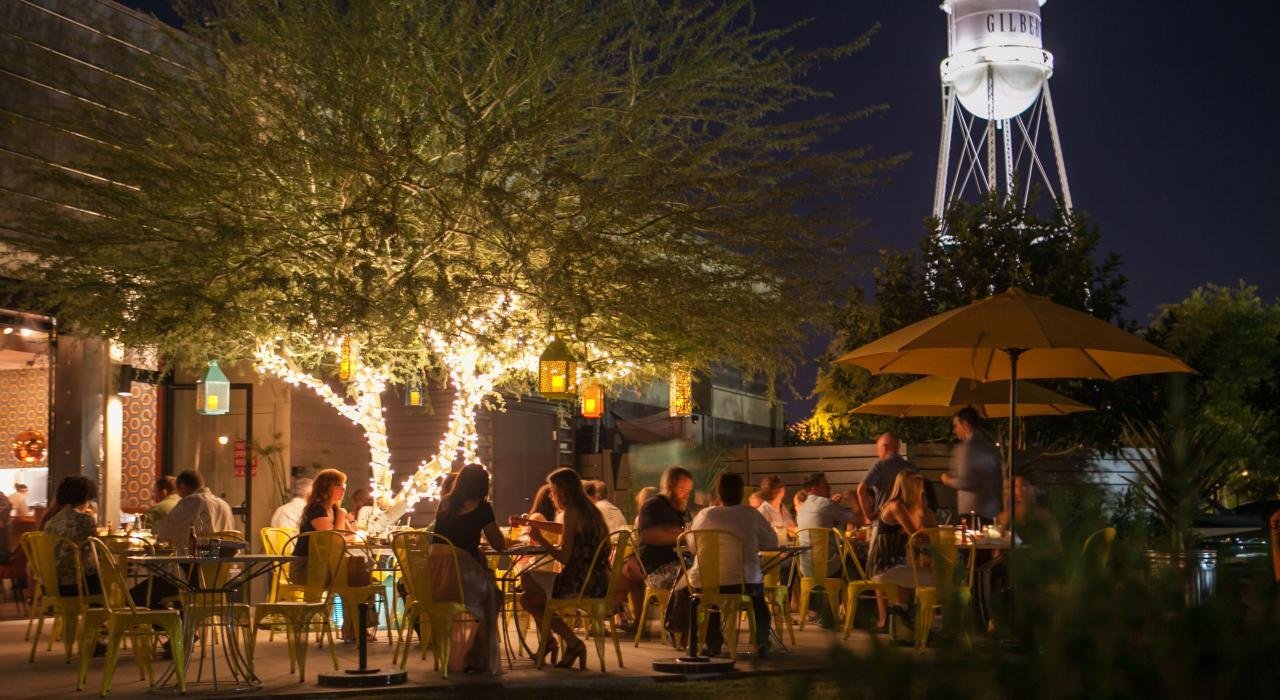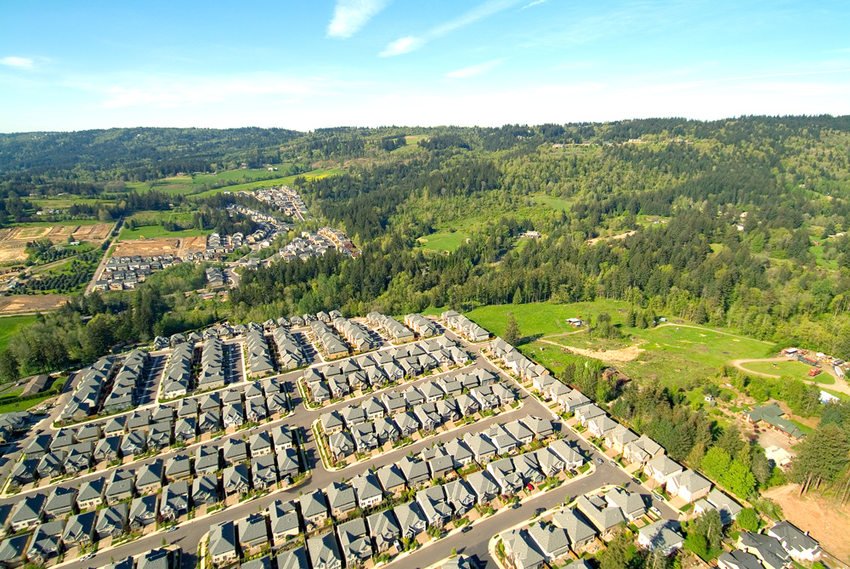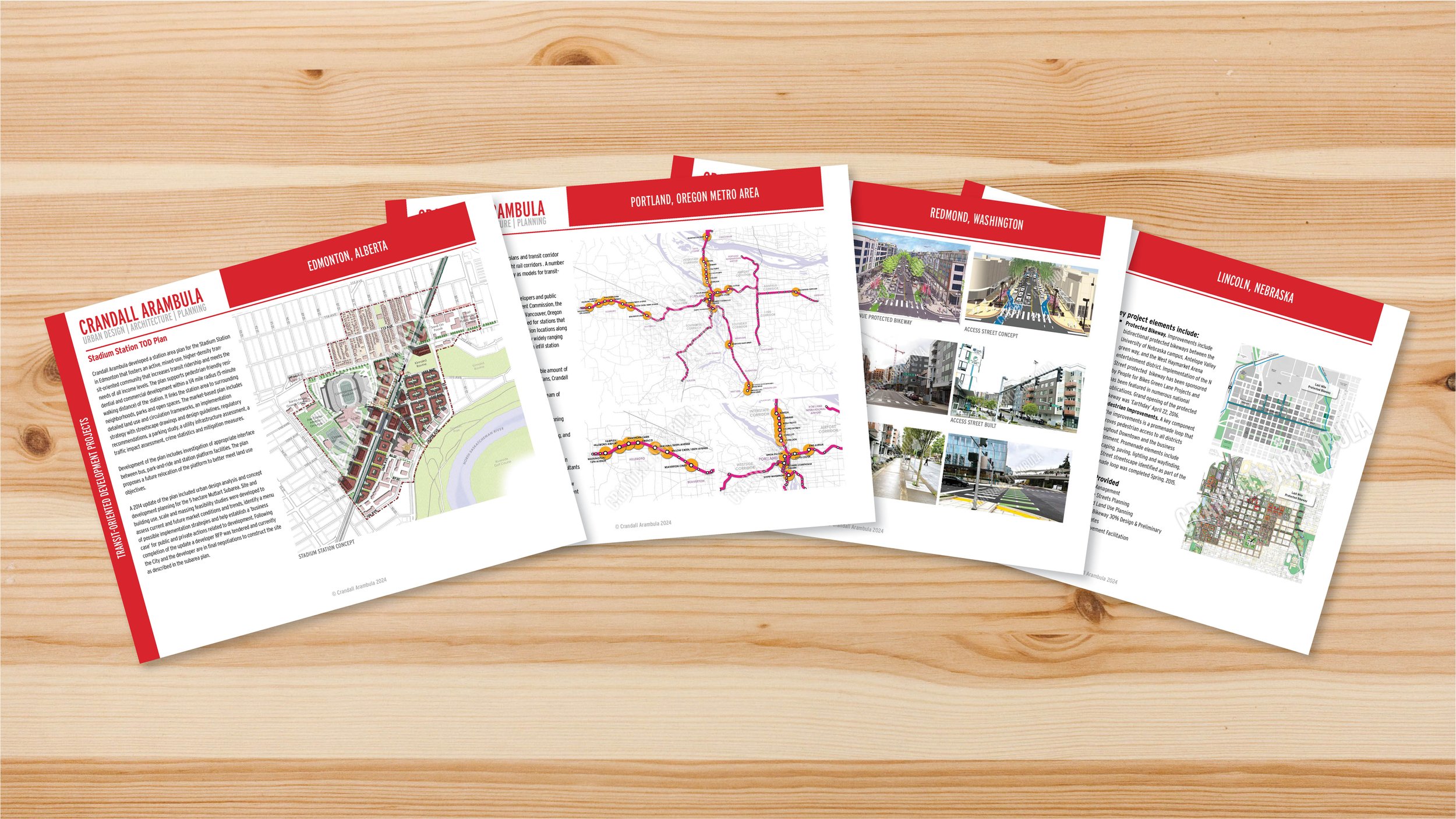Fundamentals
A complete street is designed for the most vulnerable—the young and old.
A complete street approach to circulation design requires a fundamental shift away from the auto-oriented roadway design practices that have emphasized reduced vehicle congestion and increased motor vehicle capacity. Crandall Arambula designs complete streets that equally accommodate pedestrian, bicycle, and transit modes.
REPRESENTATIVE PROJECTS
Albany, Oregon
Kansas City, Missouri
Fairbanks, Alaska
Whitefish, Montana
Vancouver, Washington
Lake Oswego, Oregon
Great complete streets share a common value—they are walkable and bikeable. While a balanced street network addresses the necessary loading, parking, and maneuvering requirements for autos and trucks, a great complete street design approach prioritizes walking first, then biking, transit and autos, and trucks last.
Complete streets are the ‘DNA’ of economically successful and livable communities. Because a grid of urban roads, bike lanes, and sidewalks can comprise up to 40% of a district, streets need to function both as conduits for travel and well as ‘places’ that improve the livability and economic value of adjacent land uses
We do not have a “one-size-fits-all” approach. We design to meet each corridor's unique conditions.
There are generally two complete street types—‘destination and ‘mobility'. These types should be based on existing and planned land uses, physical context, and a community’s development vision for the street corridor. A corridor may be comprised entirely of one of these two street types or may include stretches of each in different districts along the corridor’s length.
Destination
‘Friction’ is tolerated. Congestion and slow travel speeds are encouraged.
Destination streets, in contrast with mobility streets, are more than simply conduits for travel. They are designed as a destination—a ‘place of arrival’. Pedestrian and bicycle modes should be emphasized with ‘lingering’ facilities such as curbside parking, transit stations, and wide sidewalks that can comfortably accommodate outdoor seating.
Mobility
‘Friction’ is minimized. Streets are designed primarily as travel conduits for all modes.
Congestion is discouraged. Mobility-type complete streets emphasize through movement- getting from point A to B, rather than creating a place of arrival. Design considerations that maximize speed, and capacity and minimize user conflicts are employed. While mobility-oriented facilities can be designed for all modes, the emphasis is often on transit and auto modes.
Pedestrian-Friendly Street Planning and Design
REDMOND, WA - OVERLAKE VILLAGE STREET DESIGN GUIDELINES
Why are streets important?
Since streets often occupy up to 40% of the downtown land area, they play an important role in the financial health of an urban area. Pedestrian-friendly streets create places where people want to meet, shop and stroll. If you go to the best neighborhoods and downtown areas, you’ll find pedestrian-friendly streets. If you visit economically depressed downtowns or neighborhoods, you’ll often encounter environments that are hostile to the pedestrian.
Fairbanks, alaska - cushman complete streets
albany, oregon - downtown complete streets
HILLSBORO, OR - ORENCO MAIN STREET
Pedestrian Emphasis
While there is a need for automobile, bicycle, and public transit in the downtown, in all cases the most important consideration should be pedestrian comfort, safety, and convenience.
Where intersections with other transportation modes occur, the pedestrian’s comfort, safety, and best interests must not be compromised.
The pedestrian should be unimpeded and comfortable in all seasons and hours of the day and in all areas of downtown, district, neighborhood, or station area.
Reinforce & Enhance Pedestrian System
Pedestrian routes should be attractive, easy to use, and encourage walking and activity.
Sidewalks should be continuous, avoiding interruptions such as vehicle curb cuts or changes in direction or grade.
Walkways should be free of barriers such as utility poles, newspaper boxes, cafe tables and chairs, permanent planters, tree grates, or other obstructions and clutter.
Protect Pedestrians from the Elements
Provide pedestrians with protection from wind, sun, rain, sleet and snow.
Awnings and canopies are encouraged along the ground floor of buildings to protect pedestrians from rain and snow during inclement weather and provide shade in summer.
The design of awnings and canopies should be an integral component of the building facade. Awnings should be in proportion to the building and sidewalks, and not so large as to impact street trees, light fixtures, or other street furniture.
LAKE OSWEGO, OR - STREETSCAPE
OAK PARK, IL - WESTLAKE SHARED STREET
Provide Places for Stopping and Viewing
Provide safe, comfortable places where people can stop to sit, rest, and visit. People-watching, socializing, and eating are restful and pleasurable activities for pedestrians; providing special places where they can do these activities increases both the pedestrian’s sense of security and his actual security.
Such stopping places also add vitality to the urban environment - but only if they are used. People will use available seating in open and populated, well-designed areas, not in secluded or hidden areas.
Seating tends to be used more frequently as rest areas between major destination points. Seating is also desirable outside food and drink establishments and near food vendors.
While benches provide the simplest way to provide seating, wide steps, edges of landscaped planters, and low walls can also be appropriate.
Integrate Universal Design
Accommodate accessibility for persons with disabilities in a manner that is integral to the design of the building and public right-of-way.
On existing buildings and sites, all ramps, lifts, and elevators should be designed to be graceful and natural parts of a project, rather than simply a means of meeting the requirements in an awkward or minimal manner.
On new buildings and sites, all entrances should be designed to minimize or eliminate the need for ramps, lifts, or elevators for persons with disabilities.
Protected Bikeway Planning and Design
A fully developed protected bikeway system can capture 40% of all household trips.
Bike ridership is limited by safety concerns. A community that is serious about increasing bike ridership must go beyond paint on the street. In cities with painted bike lanes, bike ridership does not exceed 5% of all trips. Protected bikeways have the potential to increase this mode split to 40%. Because protected bikeways physically separate bicyclists from automobile traffic, people of all ages and fitness levels feel safe and comfortable riding bicycles to their destinations.
Protected bike lanes have become a hallmark of forward-looking modern cities worldwide. But urban cycling investments tend to focus on the needs of wealthy riders and neglect lower-income residents and people of color—even though the single biggest group of Americans who bike to work live in households earning less than $10,000 yearly, and studies in many lower-income neighborhoods show that most bicyclists were people of color. Crandall Arambula advocates for creating protected bike networks in lower-income minority neighborhoods—helping residents get to work affordably, quickly, and safely, and improving public health and quality of life in communities where these benefits are most needed.
“I am one of the traffic engineers who attended one of your cycle track (protected bikeway) workshops last year. I was on the ‘slightly skeptical’ side back then. But between your workshop (which got me thinking), some new research findings, and a recent trip to Copenhagen, I’m an advocate.”
Gary R. Obery, P.E.
Traffic Operations Engineer,
Oregon Department of Transportation
REPRESENTATIVE PROJECTS
Kansas City, Missouri
Fairbanks, Alaska
Vancouver, Washington


